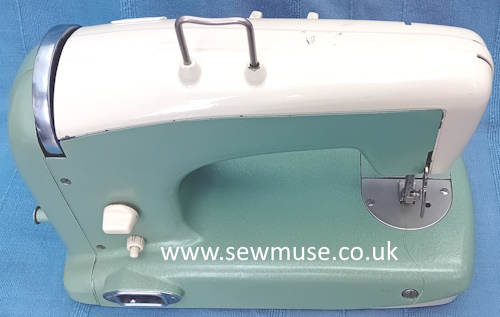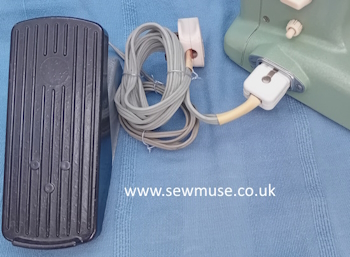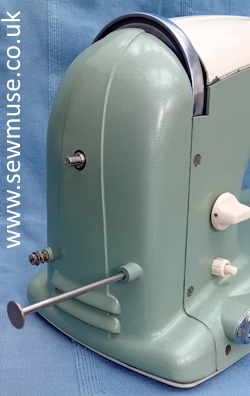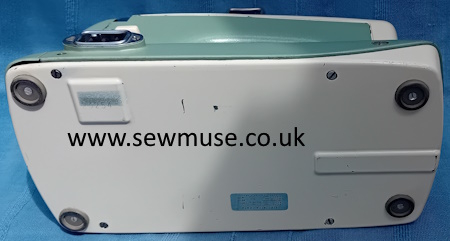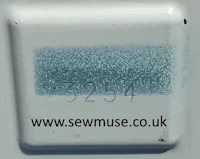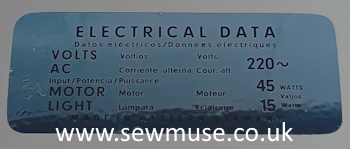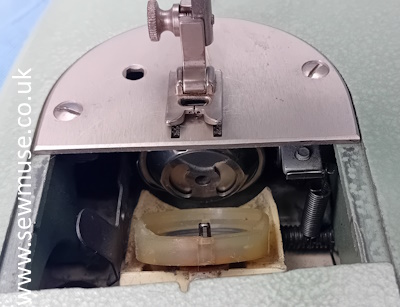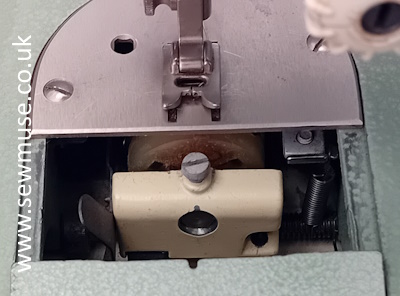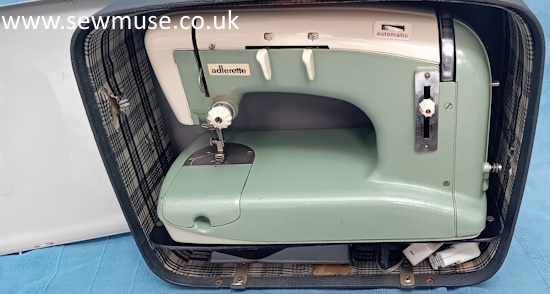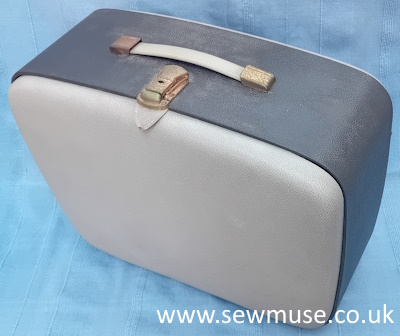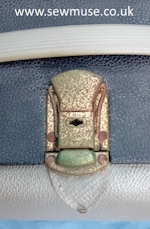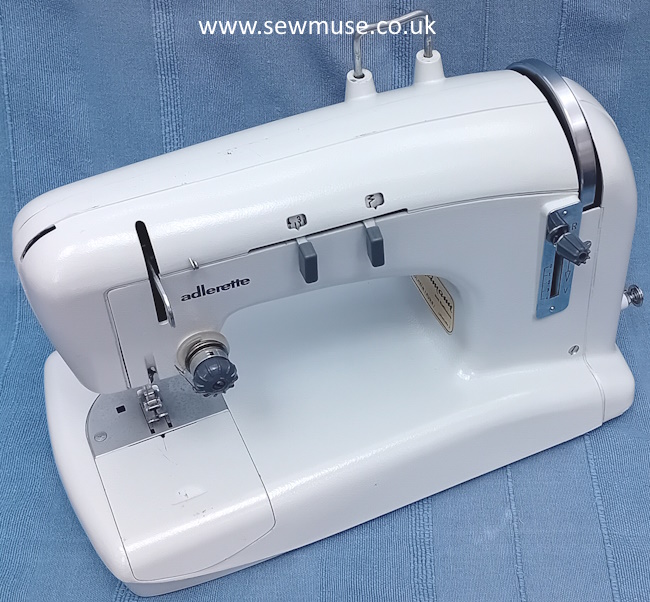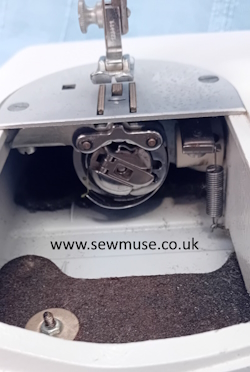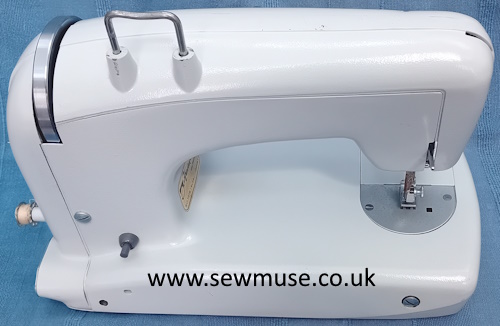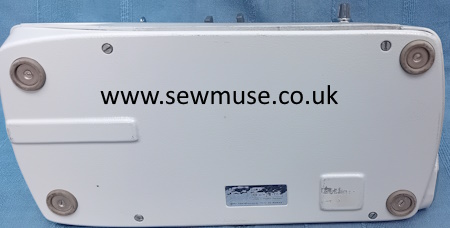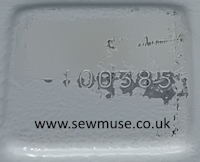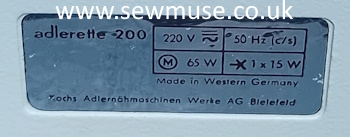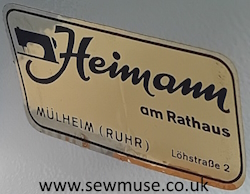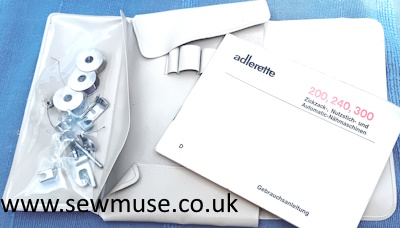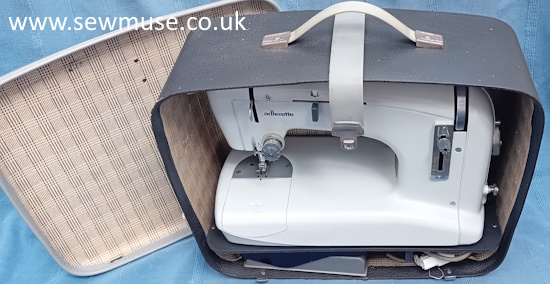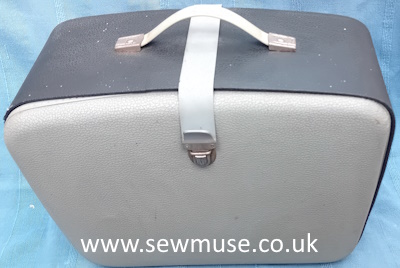Kochs Adler can trace it's roots back to 1860 when Carl Baer and Heinrich Koch started making sewing machines in Bielefeld, the partnership was short lived and when Carl Baer left Koch continued manufacturing sewing machines under the name H. Koch & Co.
The company was very successful producing machines on the Wheeler & Wilson Principle called Adler (Eagle in English). In 1895 the firm was reconstituted as Koch Adler A.G. although it seems to have continued to periodically use the name Koch & Co. but in 1913 it was again reconstituted as Koch Adler Nähmaschinen Werke A.G.
In the 1930's the company manufactured domestic sewing machines for Dürkopp and after World War 2 the factory was rebuilt and the company was able to restart sewing machine production. Additional manufacturing facilities were constructed at Bielefeld in 1955 to provide extra capacity to produce a newly introduced line of typewriters.
The company survives to the present day as Dürkopp Adler A.G. now occupying a purpose built factory at Bielefeld-Oldentrup.
The machines below were possibly some of the last designs of domestic sewing machines the company produced. Initially they were sold under the name Adler but this was changed to Adlerette. The range comprised the 190, 200, 240, 300, and the 340.
The 190 was a basic straight stitch machine. The 200 could produce a limited range of stitch patterns, the 300 although it looks like the 200 has an extra feature whereby contoured pattern bars can be placed in the slot on top of the machine to produce different stitches. This was an unusual system differing from all other manufacturers who used disc cams to vary the stitch design. The 240 and 340 were free arm versions.
Follow this link to a FREE copy of the Adlerette 300 Manual (English)
Although this manual was issued specifically for the 300 many of the basic instructions are common to the other Adlerette Models.
Alderette 300 Serial No.23254.
An early version of the Adlerette 300 probably produced c1962. It is very evocotive of the era - beautifully designed and finished in Green & Cream.
The 300 was a higher specification model with an Automatic feature whereby interchangable steel pattern bars could be inserted in the slot marked Automatic in the top of the machine allowing it to produce a wider range of stitch patterns than the more basic 200
Unfortunately the pattern bars are no longer with this machine which is a great shame as the idea of using contoured strips of metal rather than cams to produce stitch patterns fascinates me.
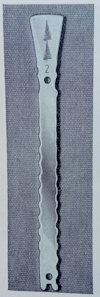
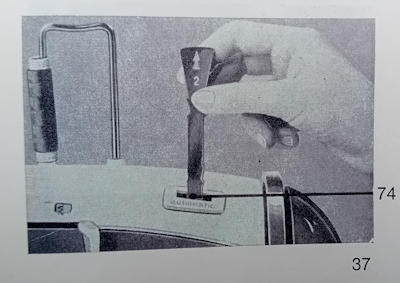
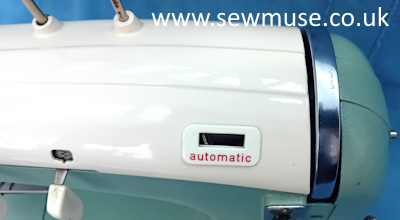
The two Black & White illustrations were taken from a manual and illustrate how Adler's pattern bars were used. There were five of these contoured bars supplied with the Adlerette 300 each giving a different stitch design.
The first photo below shows the rear of the Adlerette 300 which has the socket for the footpedal. The second shows the footpedal and connection block.
The end casing has two louvres to cool the motor also shown in it's extended position is the spool pin for bobbin winding. The small switch is for the light.
The Serial Number 23254 is stamped on a raised square platform on the bottom of the machine. There is also an Electrical Data label in English, Spanish and French.
The bobbin cover slides away to reveal the bobbin and it's holder. The cream plate is designed to hold the bobbin securely in place.
The case is well designed to hold both the machine & the accessories including the footpedal. It is held closed with a single latch.
Alderette 300 Serial No.100385.
A later version of the Alderette but this is the 200 series which was a simple Zig-Zag machine.
Probably made c1965 the plain white gives it a very modern look even though it's 60 years old.
As this is a later machine the bobbin holder has been improved.
The serial number 100385 is stamped on a raised square platform on the bottom of the machine. There is also an Electrical Data label which is simpler than the one on the 300 machine above.
The end casing is slightly different from the earlier version as the plug socket for the footpedal is in the end of the machine rather than the rear. The spool pin for bobbin winding is shown complete with spool - given the length of the spool pin I presume several bobbins could be held on it at the same time.
The machine came with it's accessory pouch and included the original manual which is in German and covers the Adlerette 200, 240, & 300
It has Adler-Riccar on the back cover which confirms it was printed post September 1964.
The name of the retailer Heimann & Rathaus, Mulheim, Ruhr is on the pillar under the arm which indicates it was purchased in what was then West Germany.
The case is a similar design to the early model the most noticible change is the strap from front to back with the catch on the end.




